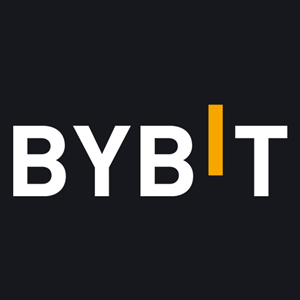The 101 Guide To Ethereum Staking July, 2025
Staking is a way of getting a return on your crypto, similiar to earning interest on your money in a savings account at a bank, and could yield up to 5% APY. In this guide we'll show you three ways to stake your Ethereum - so whether you're just getting started, been staking for a while or are already a seasoned trader - there's something for everyone.
 Written by Nikolas Sargeant
Written by Nikolas Sargeant
| Fees | Deposit Methods | |||||||||
|---|---|---|---|---|---|---|---|---|---|---|
| Name | Cryptos | Taker | Maker | Withdrawal | Wire | Credit | US Allowed | Active Since | Offer | |

Bybit
Contract Trading Exchanges
|
182 | 0.06% | 0.01% | 0.0005 | 2018 |
GET UP TO $600 IN REWARDS
|
Visit | |||

KuCoin
Centralized Exchanges
|
637 | 0.10% | 0.10% | 0.0005 | 2017 |
GET UP TO 500 USDT IN SIGN-UP BONUS
|
Visit | |||

MEXC
Centralized Exchanges
|
621 | 0.20% | 0.00% | 0.0003 | 2021 |
GET 10% DEPOSIT BONUS!
|
Visit | |||

Huobi
Centralized Exchanges
|
415 | 0.20% | 0.20% | 0.0001 | 2013 |
GET UP TO $300 IN SIGN-UP BONUS
|
Visit | |||

Crypto.com Exchange
Centralized Exchanges
|
244 | 0.075% | 0.075% | 0.0005 | 2019 |
GET 10 USD IN SIGN-UP BONUS
|
Visit | |||
To help validate blocks and ensure the Ethereum (ETH) network’s security, one can put aside a portion of their ETH tokens to be staked. As a result, rewards in the form of more ETH are given out.
TLDR:
- You can earn annual percentage yield (APY) rewards by staking your Ethereum.
- The average on-chain staking yields post-Merge between 4-5% APY.
- ETH can be staked using one of three methods; centralized exchange, staking pools, and personal ETH validator.
|
Exchange |
APY (for Flexible Term Staking of ETH) |
|
5% |
|
|
1.66% |
|
|
1.2% |
|
|
0.92% |
|
|
0.5% |
|
|
0.3% |
|
|
0.2% |
What is Ethereum Staking?
Finally, after seven years of work—Blockworks—the Ethereum network has converted from a proof-of-work (PoW) to a proof-of-stake (PoS) consensus, allowing holders to stake their tokens and earn rewards in return.
The advantage of PoS is that rather than solving complicated mathematical equations to check its legitimacy, proof-of-stake consensus algorithms rely on validators, each keeping a certain amount of ETH tied up for voting on the validity of transactions. This ETH tie-up is referred to as “staking,” and a consensus mechanism is named “proof-of-stake.” In comparison to proof-of-work, proof-of-stake is much more eco-friendly.
In return for verifying the integrity of the Ethereum network, a portion of transaction fees is awarded to stakers. These compensations are an Annual Percentage Yield (APY), paid out at varying times depending on where the funds are held. This process is akin to placing fiat currency inside a savings account with a yielding interest rate at a regular bank and gaining profit from it in time.
ETH 2.0 Staking
The long-awaited merge to PoS was officially completed as of September 2022. But we still need to be at the end of the process. The move to PoS is being completed in phases, and at present, stakers can't remove their locked ETH. If you plan on staking ETH, you must be aware that you will be able to access your funds later.
The capability to withdraw is expected to launch at some point at the beginning of 2023. Until then, stakers will continue to earn "tips," which are bonus transaction fees paid out from the completion of each block.
In the meantime, to access your staked ETH, you can use the "liquid staking" approach discussed below. This staking process produces a fluid “staked token”, which can be purchased and traded similarly to regular ETH.

How To Stake Ethereum
For those willing to stake their Ethereum, you must have at least 32 ETH staked to become a validator. But, this kind of staking is saved for the more seasoned crypto enthusiast. Thankfully, there are other ways to stake Ethereum without putting aside tens of thousands of dollars. Validators enable smaller ETH holders to assign their tokens to them and earn part of their staking rewards.
In essence, there are three main ways to stake Ethereum ranging from beginner to advanced. These are as follows:
- Centralized Exchange: Many of the most prominent exchanges offer ETH staking. The procedure of staking ETH is easily completed with a few clicks, and rewards start accumulating immediately.
- Staking Pool: With this intermediate method, you will need to take a few extra steps, but it has the advantage of providing you with a liquid token that can be swapped for your staked ETH while still allowing your tokens to continue earning rewards.
- Your Node: The most complex staking is also the most direct. Operating your validator node necessitates owning 32 ETH to the stake and a computer powerful enough to run transactions while constantly connected online.
Best Decentralized Exchanges For ETH Staking
For users interested in DeFi staking, our team of in-house crypto experts has put together a list of the top five DEXs. In no particular order, here are five of the best DEXs for ETH staking:
- Kyber Network - Top-tier DeFi provider offering its on-chain liquidity protocol allowing for decentralized token swaps to be integrated into any application.
- Bisq - An easy-to-use DEX requiring no identification verification and offering its code open source, allowing users to participate in the project strategy.
- IDEX - The platform has been operating since 2016, offering smart contract support for real-time trading.
- Honeyswap - A decentralized exchange deployed on the xDai chain, which supports Polygon protocol and plans to integrate with the Arbitrum chain.
- Binance DEX - The exchange is supported by the biggest name in the crypto space, so it offers safe and secure trades with low trading fees.

SEC Clamps Down On ETH Staking
U.S. Securities and Exchange Commission (SEC) Chair Gary Gensler has warned other yield-earning programs to “take note” and meet regulatory and compliance standards as the SEC clamp down on major US crypto platform Kraken and hands out a $30 million fine.
Gensler discussed the fine and the future of trading contracts in an interview with CNBC stating, "Companies like Kraken can offer investment contracts and investment schemes, but they have to have full, fair, and truthful disclosure. And this puts the investors who watch your program in a better position. That's our basic bargain. They were not complying with that basic law.”
The SEC aims to regulate earning programs regardless of their name, with exchanges labeling them “lend, yield, and earn,” though each type of program has the same underlying economics. Regardless of the name, Gensler has stated that if investors and platforms want to use this kind of investment scheme, they much comply and register as a securities platform and get approval from the Division of Corporation Finance on the specific product.
The increased pressure from regulatory bodies like the SEC hasn’t gone unignored, as crypto exchanges offering staking products strive to meet regulatory standards and increase the quality and security of their services.
Beginner Method: Staking ETH Using Centralized Exchange
Centralized exchanges give you a chance to stake your ETH tokens for a yield. These rewards differ across different exchanges but typically provide a 3% - 7% APY. Remember, most of these platforms will control your wallet keys, so you must be sure that you can trust the firm with your funds.
Once you stake ETH with a centralized exchange, rewards will accumulate, although withdrawing the ETH might only be possible once updates are made to the network.
How To Pick A Centralized Exchange
Entrusting your cryptocurrency to a business can be nerve-wracking, so only engage with them when you are comfortable with the firm's reputation and quality of service. Established companies, such as Kraken and Binance, are reliable because they are established names in the crypto domain.
Security is one of many important concerns when selecting a centralized exchange to stake on. It is essential to consider the staking rewards rate provided. Although Ethereum has an official reward rate applicable to all stakers, certain platforms offer higher rewards to entice more customers. But be mindful of obscure sites that offer APY rates that appear too good to be true – typically, these are fraudulent.
Pros and Cons
Pros:
- Easy way to register and report crypto holdings for tax purposes.
- Centralized exchanges offer deals on APY rates at certain times.
- Straightforward and swift entry for users. Very low barrier for entry to staking for newcomers.
Cons:
- If the company is hacked or folds, as many have done before, you may lose your funds.
- You don’t control the keys to your crypto with a centralized exchange, meaning you are not directly in control of your holdings.
- Whatever the exchange APY is labeled as is what you will get; you can’t choose your pool.
Intermediate Method: Staking ETH via a staking pool
Ethereum demands a minimum balance of 32 ETH to stake as an individual, which most crypto holders do not have. Creative solutions for staking with a lower balance have emerged to manage this issue.
One option for staking ETH is a big centralized exchange, described above. Another way to go is using an Ethereum staking pool. A staking pool involves people with ETH coming together and joining their funds to meet the 32-token threshold demanded staking. Later, the rewards obtained from staking are distributed among them depending on their contribution.

The industry of staking pools has boomed on its own, leading to the creation of entire crypto platforms made to provide this service. Though many staking pools exist, they vary in different ways. One of the main contrasts is between a liquid and a non-liquid pool.
Non-liquid staking pools allow ETH holders to pool their tokens and collect staking rewards. Contrary to this, liquid staking pools bring together ETH tokens and offer stakers a derivative token that can be exchanged as required and used. Stakers gain from the rewards without sacrificing their liquidity.
Staking ETH Via a Non-Liquid Staking Pool
Non-liquid staking pools allow ETH holders to earn staking rewards even if they do not have the 32 ETH needed to stake on their own. As opposed to liquid staking pools, non-liquid staking pools do not provide a tradable derivative token that can be utilized while one's ETH is securely locked up.
One major advantage of non-liquid staking pools over liquid staking pools is that a non-liquid stake does not become a taxable event. A transferable token is returned when ETH is staked in liquid staking, which must be reported to the tax man, similar to any other token swap. However, in non-liquid staking, no new tokens are issued, so it remains untaxed. It should be mentioned that rewards earned through staking APYs are still taxable in both scenarios - liquid or non-liquid.
Non-liquid staking rewards generally offer an APY of 4% to 6%. While they are lower than those in liquid pools, they provide an ideal means of exploiting inactive ETH with no balance threshold of 32 ETH needed.
Staking ETH via a Liquid Staking Pool
Liquid staking pools are often the best way to make returns when staking ETH. These pools receive rewards from regular ETH staking and generate liquid tokens that can be lent out or used in other DeFi protocols with higher yield potential.
It is essential to bear in mind that since liquid staking suppliers emit a different token that represents your staked ETH, liquid staking may be an event with taxation, as you are swapping one crypto token for another. This varies from non-liquid staking pools, which do not provide a derived token and hence do not offer extra yield possibility nor a taxable incident when you trade.
Yielding a return of up to 10%, the combined use of liquidity staking with loans or liquidity mining differs from the customary ETH staking rewards of around 5%.
Pros and Cons
Pros:
- Can stake from as little as 0.01 ETH.
- You will receive far higher returns than that of a centralized exchange.
- Benefit from staking across various pools instead of being stuck with one set APY.
Cons:
- Require knowledge of the space to reap the full benefits, as the DeFi ecosystem can be confusing and daunting for newcomers.
- Liquid staking involves transactions and may be taxable depending on your country.
- Some of the most prominent staking pools only work with major validators, contributing to the network's centralization.
Advanced Method: Running Your Own ETH Validator
Network validators are responsible for authenticating Ethereum transactions and forming Ethereum blocks. To be an active validator, you need to lock up 32 ETH. When that is done, you will get the entire non-diluted staking APY of your ETH (about 5%).

Starting as a network validator certainly requires some technical understanding. Although not all validators need to have a very powerful computer system in their own home, and some can use external machines located in data centers (staking using cloud systems), validators should still be prepared for any potential issues which may arise and must understand the details of the Ethereum blockchain.
Hardware Requirements
Running a network validator node does not require as much hardware as proof-of-work mining. Today's mid-range desktop computers are adequate for the task. It is essential to use an SSD rather than an HDD for validation. Moreover, it is highly advocated that a 64-bit Linux system and cable internet access (not WiFi) should be utilized.
A brief rundown of the recommended system requirements to begin running your node would be as follows:
- Operating System: 64-bit Linux, Mac OS X, Windows, Arm64
- Processor: Intel Core i7–4770 or AMD FX-8310
- RAM: 8GB RAM
- Storage: 100GB available space SSD
- Internet: Broadband connection through ethernet cable
Pros and Cons
Pros:
- Become a major cog in the operating system of the Ethereum network.
- Claim staking rewards without using a middleman or centralized exchange.
- No exposure to potential hacks or downtimes, as all funds staked are safe.
Cons:
- The huge financial barrier to entry.
- If you make mistakes, you may be ejected from the network.
- Requires technical know-how in running a node and assembling the hardware.
The Merge
Ethereum is usually a network that relies on proof-of-work for security. But, on September 15th, 2022, Ethereum and the Beacon chain merged. The Beacon chain has been utilizing the proof-of-stake consensus since 2020, and the main Ethereum chain follows this same protocol.

The price of ETH didn't react significantly to The Merge, and the system had no outages or anomalies. Ethereum's proof-of-stake functionality now permits the blockchain to function at full competency with a much smaller carbon footprint, substantially lower transaction expenses, and a higher number of transactions per second.
However, the Merge is not Ethereum’s last expected upgrade. Throughout the following months and years, the blockchain is projected to experience a sequence of changes that will make it quicker and more cost-effective. Vitalik Buterin, one of Ethereum's founders, humorously labeled these changes as the surge, the verge, the purge, and the splurge.
- The Surge: The Ethereum network plans to add sharding, enabling it to handle over 100,000 transactions per second. The deployment of this upgrade is referred to as the Surge and is anticipated to be put into action sometime during 2023.
- The Verge: The upgrade to the protocol will make validating more productive by decreasing the data that network validators need to keep on their hard drives.
- The Purge: Is designed to trim the amount of hard drive storage space ETH occupies, and it negates the need for nodes to keep track of history, amplifying the efficiency of the network.
- The Splurge: Vitalik has stated that the label of Splurge is a generic one that encapsulates "all the other exciting stuff" to come.
In Summary
Ethereum staking allows holders to validate the Ethereum network while being paid in return. The network requires 32 ETH to be stake directly, but services like staking pools and central exchanges enable staking with much lower amounts of ETH. Are you considering staking your tokens? Keep in mind that one cannot yet unstake their ETH until the next update, which will take place in early 2023.
| Fees | Deposit Methods | |||||||||
|---|---|---|---|---|---|---|---|---|---|---|
| Name | Cryptos | Taker | Maker | Withdrawal | Wire | Credit | US Allowed | Active Since | Offer | |

Bybit
Contract Trading Exchanges
|
182 | 0.06% | 0.01% | 0.0005 | 2018 |
GET UP TO $600 IN REWARDS
|
Visit | |||

KuCoin
Centralized Exchanges
|
637 | 0.10% | 0.10% | 0.0005 | 2017 |
GET UP TO 500 USDT IN SIGN-UP BONUS
|
Visit | |||

MEXC
Centralized Exchanges
|
621 | 0.20% | 0.00% | 0.0003 | 2021 |
GET 10% DEPOSIT BONUS!
|
Visit | |||

Huobi
Centralized Exchanges
|
415 | 0.20% | 0.20% | 0.0001 | 2013 |
GET UP TO $300 IN SIGN-UP BONUS
|
Visit | |||

Crypto.com Exchange
Centralized Exchanges
|
244 | 0.075% | 0.075% | 0.0005 | 2019 |
GET 10 USD IN SIGN-UP BONUS
|
Visit | |||